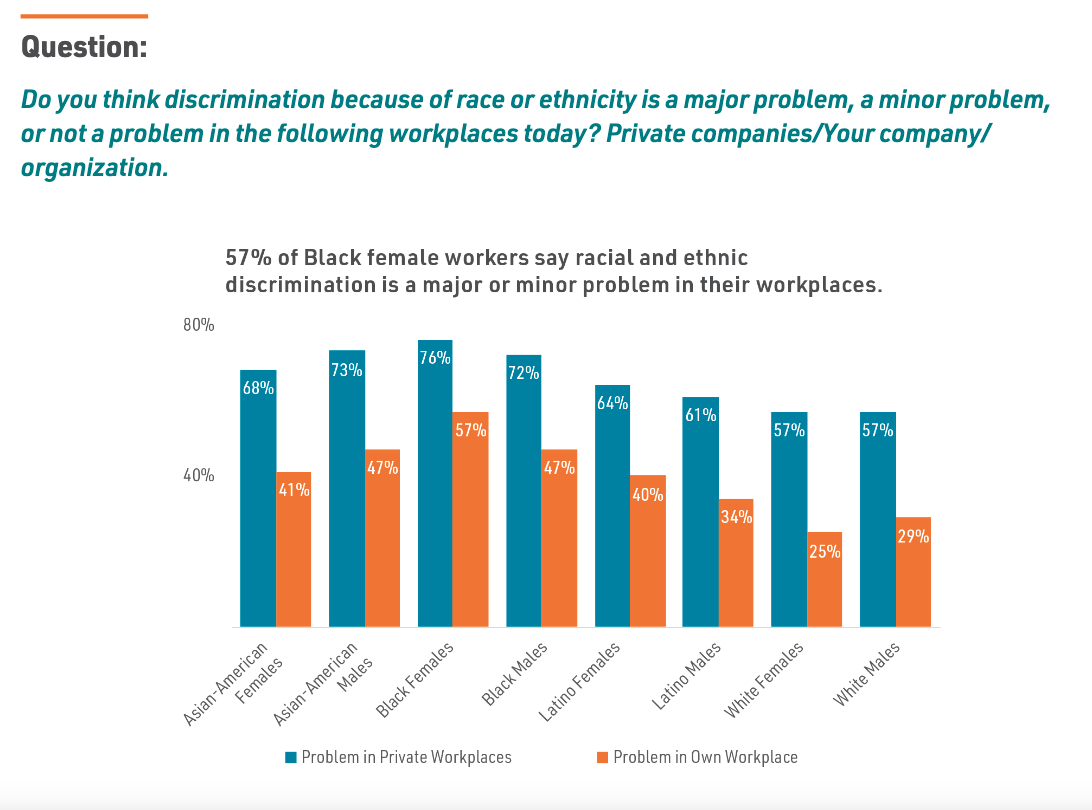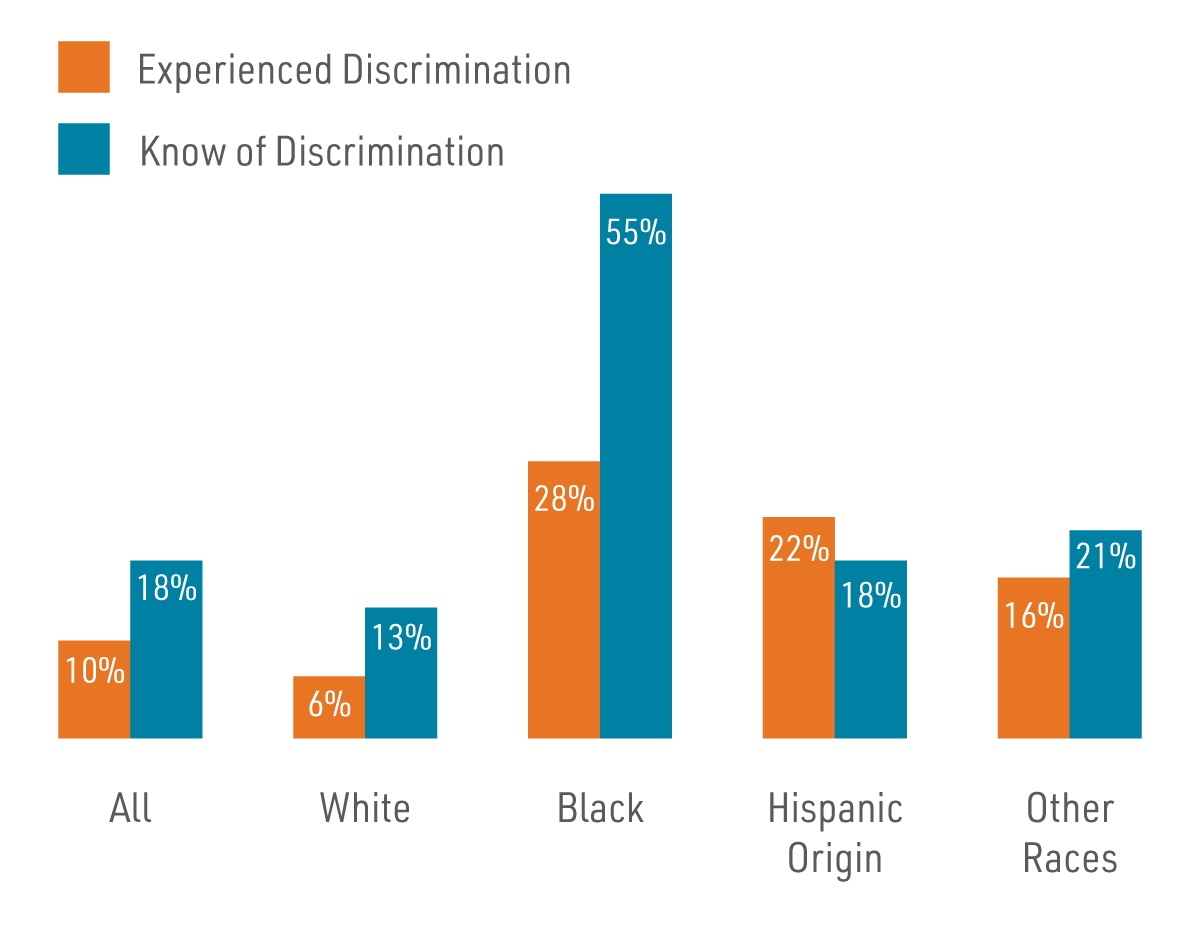Work Trends | Chapter 9
A Workplace Divided in 2002 and 2023
In 2002 and 2023, the Heldrich Center published two groundbreaking reports about discrimination in the American workplace. The surveys examined how workers perceive and experience discrimination, as well as what they expect the government and employers to do about discrimination in the workplace. The 2002 study was one of the first of its kind. The 2023 study was a multi-phase survey project sponsored by WorkRise at the Urban Institute.
Studies
A Workplace Divided: How Americans View Discrimination and Race on the Job
The survey was conducted from September 28 to October 28, 2001, and was based on a total of 1,005 telephone interviews with adult members of the workforce in the contiguous United States.
Funded by Workrise at the Urban Institute, this survey included collaborations with the National Opinion Research Center at the University of Chicago, an expert advisory panel, and Delaware State University. The study included a survey, conducted in November and December 2022, using a comprehensive, national probability-based sample of 3,277 full- and part-time U.S. workers, including:
- 605 Asian-American workers,
- 915 Black workers,
- 802 Latino workers, and
- 955 white workers.
Key Findings
Significant percentages of Asian-American, Black, and Latino workers said that discrimination based on race and ethnicity occurs in private-sector and governmental workplaces.
Black workers were twice as likely to say that they think workplace discrimination is a major problem in private workplaces today, compared to white workers: one in two Black workers said discrimination because of race or ethnicity is a major problem in private companies (49%); one in five white workers said the same (22%).
Approximately one third of Black workers, one quarter of Latino workers, and one quarter of Asian-American workers reported that, in 2022, they were treated poorly, discriminated against, or unfairly treated in their current job because of their race or ethnicity. Workers of color said the following situations occurred the most frequently in the workplace: being treated as less competent or valuable, earning less than a co-worker doing the same job, and being assigned unwanted/undesirable shifts or tasks.
In 2022, nearly 6 in 10 (57%) reported that their workplaces had non-discrimination policies.
- There was broad support for laws that protect workers from discrimination. Seventy-four percent (74%) of workers said it is necessary to have laws to protect people from discriminating in hiring because of race and ethnicity; 70% of workers said it is necessary to have laws to protect people from discriminating in promotions because of race or ethnicity.
- In 2002, many workers expressed the opinion that everyone in the workplace is treated equitably and that no unfair treatment took place. It was, therefore, not surprising that 50% of workers did not think that their employer needed to implement practices to reduce incidents of discrimination.
2022
By the Numbers
“Some people get better treatment because of their race or ethnicity in their current job.”
%
of white workers agreed a lot or a little
%
of Black workers agreed a lot or a little
%
of Asian-American workers agreed a lot or a little
%
of Latino workers agreed a lot or a little
Other Topics
Other topics covered by both studies included opinions about the responsibility of the government and employers to address discrimination and maintain or increase diversity in the workplace, workers’ experiences in larger vs. smaller companies, and workers’ perceptions of affirmative action.



